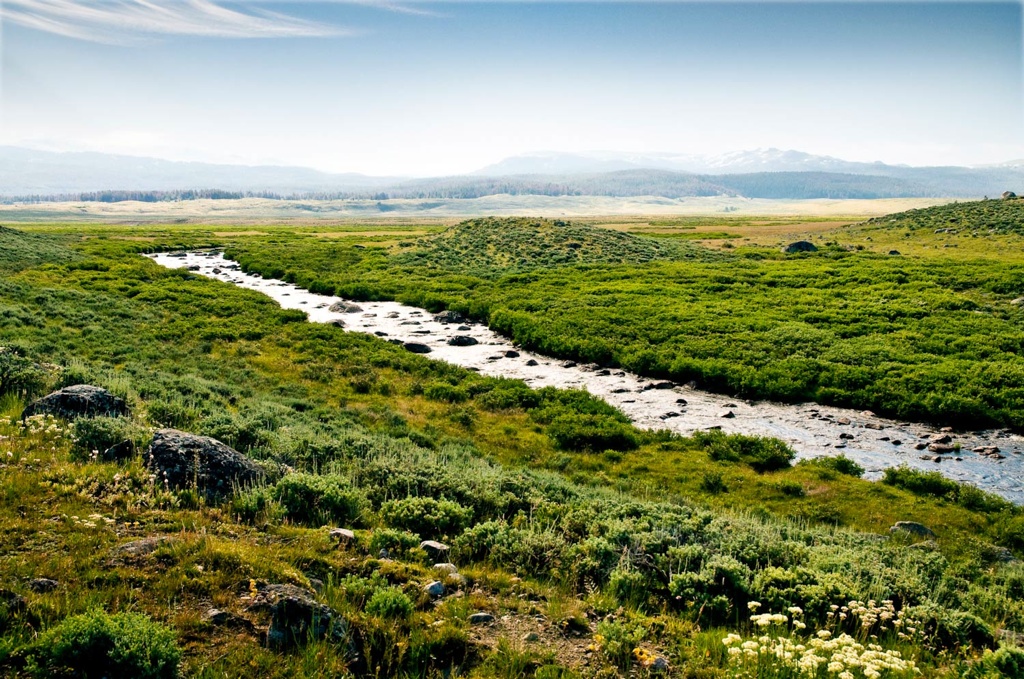In case you missed it back in September, this weeks Sunday Classic is all about pocket water and why it’s great for everyone to fish, especially newcomers to the sport.
1. Pocket water provides more trout habitat than any other type of trout water.
The easiest way to define pocket water is that it’s an entire trout stream in itself. Pocket water encompasses all water types: riffles, runs, pools, and tails just on a miniature scale. The multiple current seams, eddies, and structure found in pocket water creates an abundance of habitat for trout to position themselves and feed. Quite often it provides anglers the opportunity to catch trout from one side of the stream all the way across to the other side. This is rarely found on other water types in a trout stream, and it provides fishermen much more opportunity and should increase his/her confidence that their fishing where there’s a high volume of trout living.
2. It doesn’t require anglers to make long casts and drifts.
You don’t have to be able to make long casts or sustain super long drag-free drifts to catch trout in pocket water. Because everything is on a smaller scale, anglers can get away with making shorter casts and drifts. Both mending and line management aren’t as crucial, and anglers often have the luxury of choosing which casts and techniques their most comfortable fishing with to catch trout.
3. Trout are generally opportunistic feeders in pocket water.
Pocket water is usually found on sections of river with steeper gradients and descending elevations. Water moves faster in most cases on pocket water and since trout usually don’t have as much time to inspect the food moving downstream, they often have to become opportunistic feeders to grow and thrive. Trout found in pocket water often are more forgiving and less technical to catch. Furthermore, the turbulent waters found in pocket water provide an added feeling of safety to trout, kind of like a protective roof over their heads. It also does a great job of masking noise and movement from anglers. Both of these give anglers the opportunity to move in close and make accurate presentations without having to worry about being super stealthy.
4. Pocket water serves well for all methods of fly fishing.
I stated above that pocket water encompasses all water types. Because of this, it’s very conducive for beginners wanting to learn how to fish all trout rigs effectively. You’ll find water that’s perfect for fishing a dry fly and dropper, while other spots will be perfect for deep nymphing a tandem rig or stripping a streamer. I’ve guided first-time clients to trout on all three rigs during the day on numerous occasions fishing pocket water. Plain and simple, pocket water is perfect for teaching anglers how to properly fish all water types. And at the same time anglers can learn how to decode trout behavior and trout positioning. Since everything is on a smaller scale, it’s easier for beginners to understand the big picture and walk away from the stream a more skilled trout fishermen.
5. Pocket water holds more aquatic bugs.
The wide range of stream habitat, bottom substrate, and water types found in pocket water creates an environment that’s perfect for aquatic insects. Oxygen levels are found at their highest levels here, and in turn, you’ll regularly find the most diverse and densest populations of aquatic insects in the stream or river. Anglers fishing pocket water will generally find there to be a wider selection of fly patterns accepted by trout year round. Day in and day out the need for beginners to decipher the hatch and dial in perfectly to the key bug players will often not be as crucial. I recommend using impressionistic and attractor style patterns when possible that provide a good all around buggy look. If you find fish are positioned deep in the water column make sure you use a fly that will sink fast. Since drifts are considerably shorter on pocket water, you often only have a few feet of water to get your fly down to the feeding zone.
Keep it Reel,
Kent Klewein Gink & Gasoline www.ginkandgasoline.com hookups@ginkandgasoline.com Sign Up For Our Weekly Newsletter!

Keep it up guys. As a warm water, still water flyfisher (troot fishing wannabe) I’m loving this stuff. It’s all new to me.
Thanks Man. We’re on it!
Does pocket water generally become less productive during the winter (and if so why)? This seems to be my experience lately.
Ryan,
Read this great article by Ian Rutter on winter trout fishing. I think it will answer any questions you may have.
http://www.georgiawomenflyfishing.com/top-ten-tips-winter-nymph-fishing-ian-rutter-rr-fly-fishing-townsend-tn
Kent
Also known as the “Save the day run”. Solid info right there.